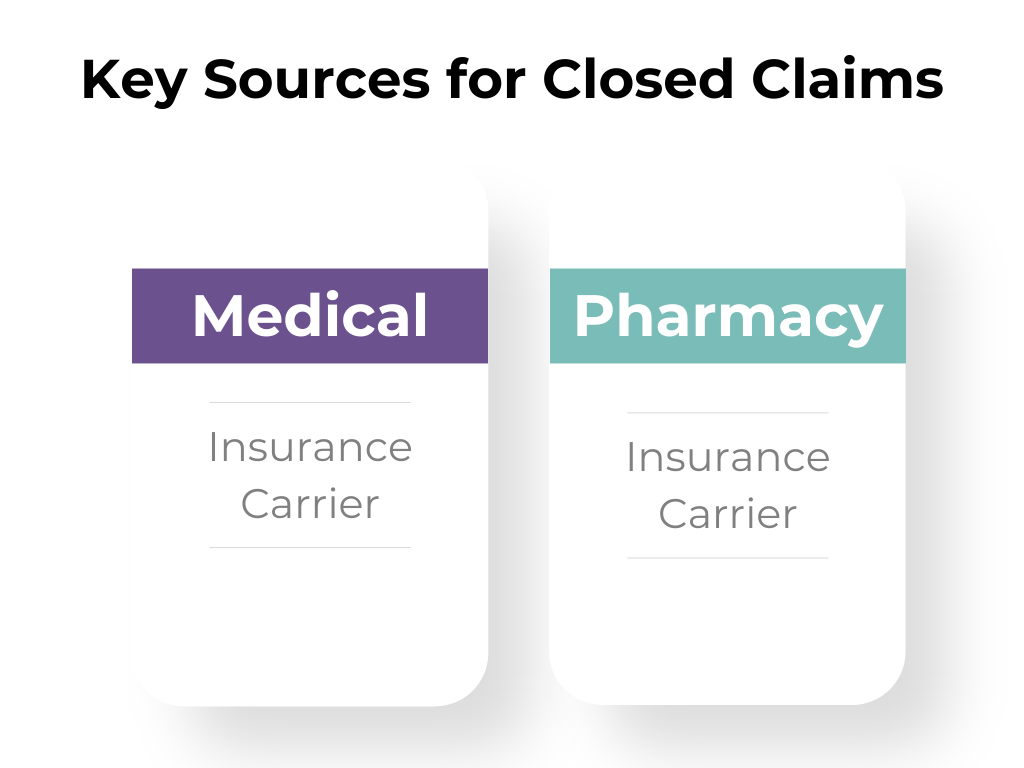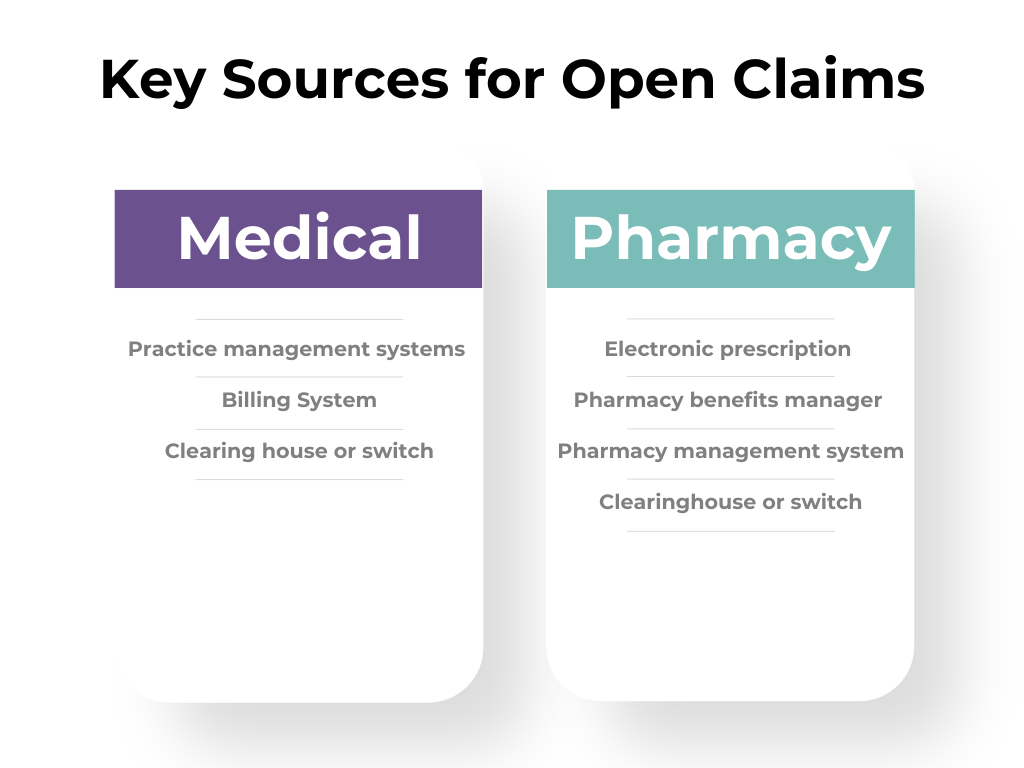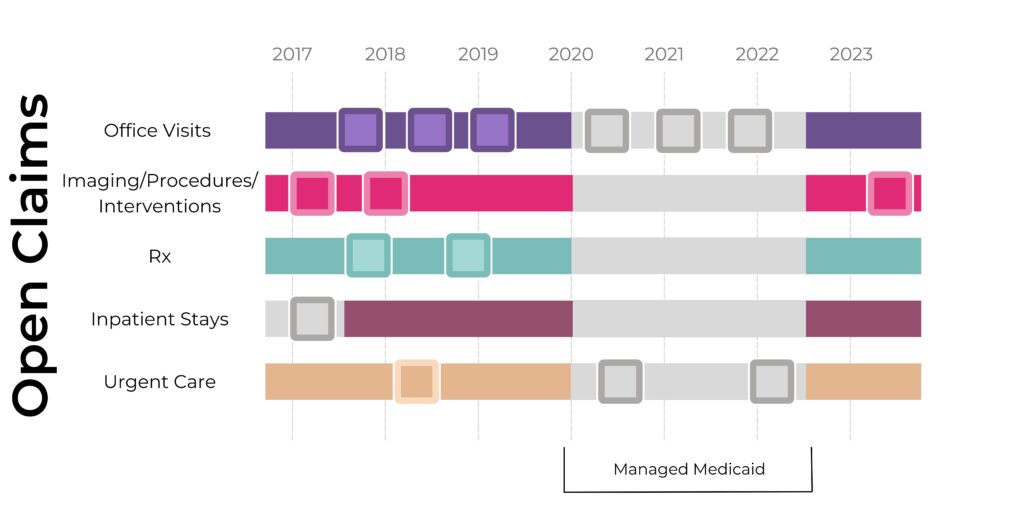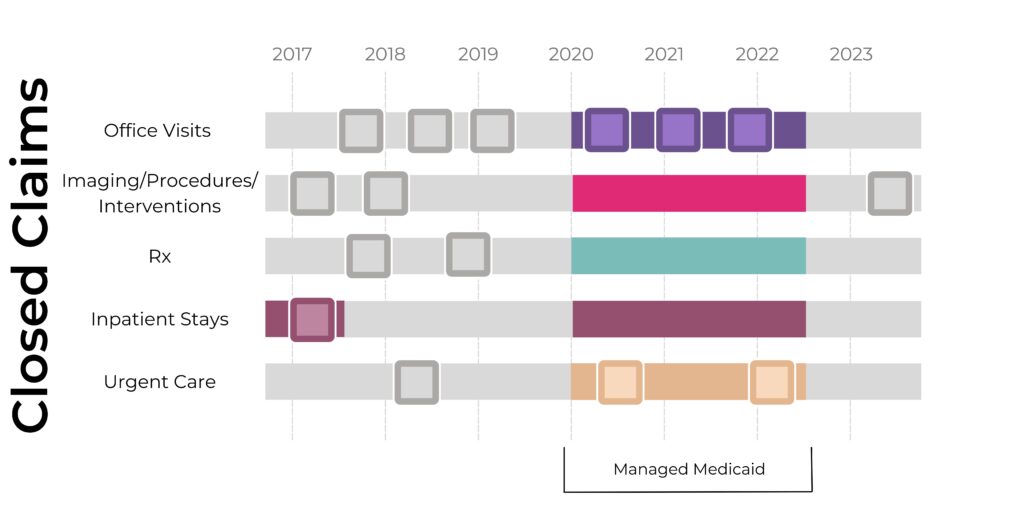Open claims and closed claims data serve as vital tools for comprehending patients’ progress and engagements throughout their healthcare voyage. However, which data type proves most advantageous and under what circumstances? Whether the need is to assess the cost-effectiveness of a recently introduced medication or streamline clinical trial recruitment, both open claims data and closed claims data deliver distinct advantages suited to various research endeavors undertaken by life sciences companies.
Open claims data: Derived from diverse healthcare sources, open claims data sheds light on a patient’s activities over an extended period, irrespective of their insurance provider.
Closed claims data: Drawn from health insurance providers (payers), closed claims data unveil nearly all healthcare activities of a patient within a specific enrollment timeframe.
Derived directly from insurance providers, closed claims data comprehensively documents nearly all patient events during their enrollment period, spanning medical and pharmacy encounters across doctor’s visits, urgent care, hospital admissions, and retail and specialty pharmacies. This provides a detailed insight into the patient journey, linking diagnoses, actions, and decisions.
Closed Claims in Action:
Closed claims offer a comprehensive view of patient interactions within the healthcare system during their enrollment period. For instance, if a patient is covered under an employer-provided health plan for three years, nearly all their healthcare interactions during this period will be captured if the provider is included in the closed claims dataset.
However, when this patient switches employers and subsequently health insurance providers, interactions may not be captured in the closed claims dataset, highlighting the limitations concerning the patients’ healthcare interaction continuity across different insurance plans.
Open claims data provides insights into patient journeys across various data sources over an extended period, while closed claims offer a comprehensive view across all healthcare settings, albeit limited to the enrollment period.
Understanding Open Claims
Open claims data encompasses medical and pharmacy claims sourced primarily from clearinghouses, pharmacies, and software platforms. Additionally, it includes other data types, such as lab results, not originating from insurance providers.
- Open medical claims: These can be captured through various means, including recording patient visits in practice management systems (PMS), billing systems and more. Data transmission occurs when doctors submit medical claims (837) through clearinghouses or switches to insurance providers, with reimbursement decisions captured in remittances (835).
- Open pharmacy claims: These claims are captured in pharmacy management systems and by pharmacy benefits managers (PBMs). After claim authorization and adjudication by insurance providers, additional data may pass through clearinghouses or switches during medication dispensation.
Open claims provide insights into patient interactions across the healthcare spectrum. Notably, the recency of this data distinguishes it—many medical, pharmacy, and lab visits within open claims data are accessible pre-adjudication, facilitating prompt reporting and tracking. Standard data fields like ICD-10 codes and CPT codes, along with billing, physician details, referring NPI, and service locations, are available.
Life science companies can leverage open claims data for optimizing clinical trials, regulatory compliance, health economics and outcomes research (HEOR), value-based agreements, data management, marketing strategies, and more.
Open Claims in Action:
Open claims are provider centric; A patient may go to 4 different doctors for during a care journey. In a sample data set, only three of those doctors are captured in the open claims data set. The claims come from clearinghouses, and all show up regardless of insurance provider.
The other doctor the patient is seeing used a different clearinghouse and therefore the claims do not show up in the open claims set, however PurpeLab has coverage for this patient’s seen by this provider rather are in the closed claims data set. This leads to a gap in data capture and, if only looking at open claims, will not be seen. These kinds of discrepancies are common in open claims data which brings up a necessity for closed claims data.
Putting it all Together
In studying diseases like Oncology, seeing the complete patient journey is necessary. Both open and closed claims offer insights into patient behaviors, each with unique benefits.
Open Claims: Due to open claims containing data from various healthcare settings independent of insurance plans, they allow for longitudinal studies over an extended period of time. It can reveal Oncology diagnoses, treatments received, and referrals.
Closed Claims: Closed claims will allow a comprehensive examination of the Oncology patient journey which ensures confidence in treatment adherence. This data will have almost all patient interactions during the enrollment period, for oncology-related events and others.
Combining Open and Closed Claims: When integrating the two data sets, you will be able to explore patient actions and treatments before, during and after enrollment period. This will allow for a rich history leading up to the diagnosis as well as the actions during enrollment. Combining these two sets of data will enrich insights into patient behaviors, diagnoses, treatments, and adherence.
In conclusion, open and closed claims are indispensable for patient-centric research. While open claims are beneficial to longitudinal studies and offer fields that are absent in closed claims, closed claims provide a concise snapshot over a defined period of time. Both data sets will have applications across various areas of outcomes research and enhance efficacy when used in conjunction.
Lets Talk!
Why PurpleLab®?
PurpleLab provides a real-world data [lab], accelerating the discovery and adoption of healthcare innovations. We want to improve collaboration across the total healthcare marketing ecosystem from life science companies to agencies to advertising technology companies. Built on one of the largest medical and prescription claim data warehouse including specialty data.



